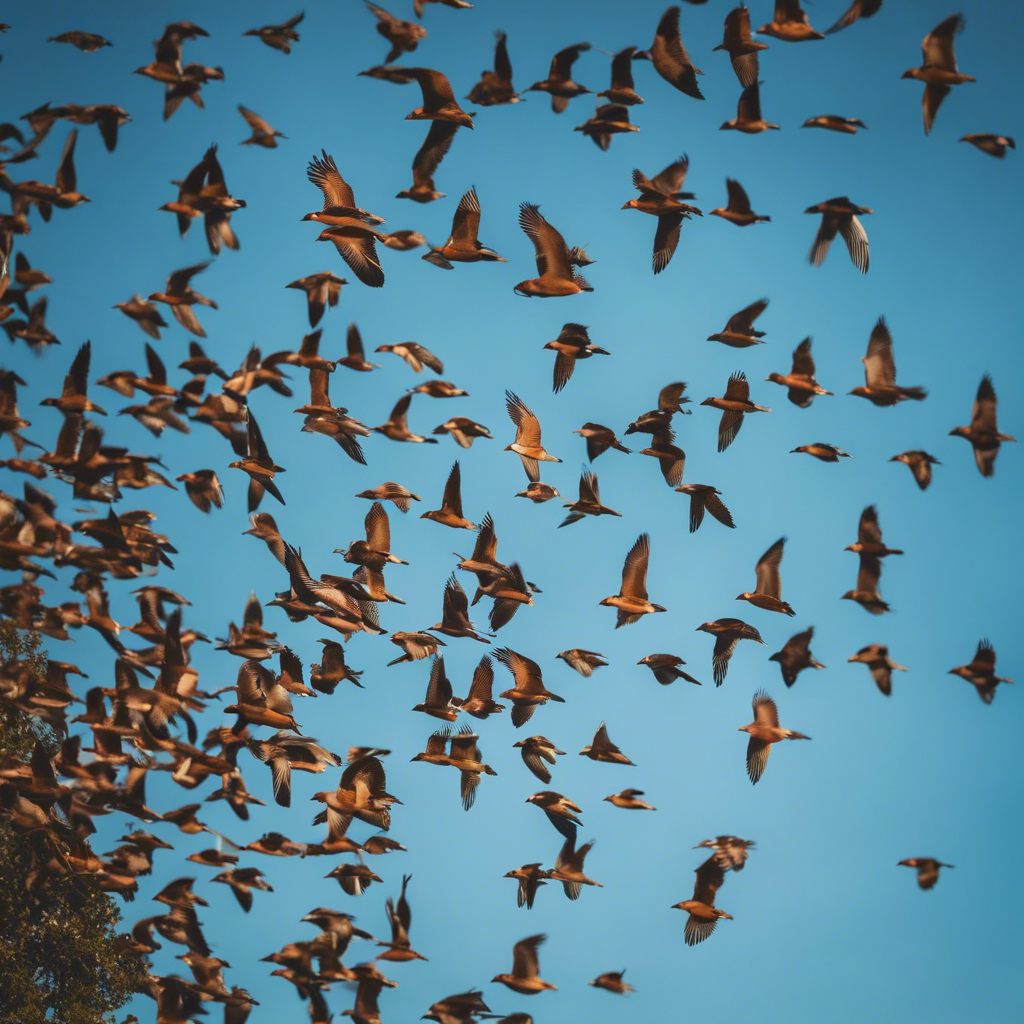During my ornithological research, I’ve been captivated by the enigma of pink eggs. My experience has shown that these chromatic marvels, like those of the House Finch, are nature’s masterpieces.
As an expert in avian biology, I believe the pink pigment serves more than beauty; it’s a clever disguise against predators. Once, while observing a Robin’s nest, the sight of those delicate pink eggs nestled among the leaves was breathtaking.
It was a moment that solidified my fascination and respect for these winged wonders and their survival strategies, a constant reminder of the intricate connections within the ecological tapestry.
Key Takeaways
- American Robin, House Finch, Tree Swallows, and some Old World Warblers are birds that lay pink eggs.
- The pink color of the eggs is a result of specific dietary components consumed by these birds and serves as camouflage.
- Genetic factors and the bird’s habitat play a role in the pink egg coloration.
- Conservation efforts to safeguard the habitats where birds lay pink eggs are crucial for the thriving of these unique species.
Unveiling Pink Egg Layers
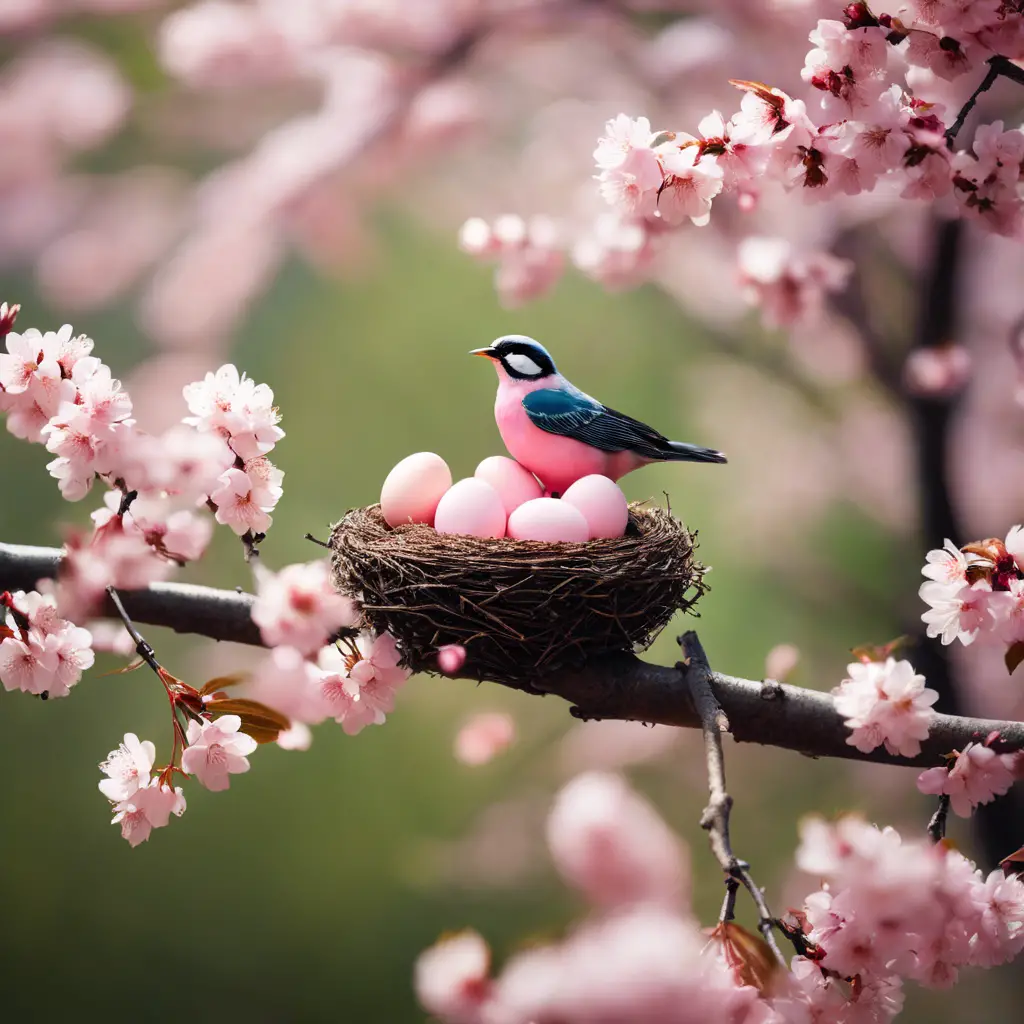
Delving into the avian world, you’ll discover that species such as the American Robin and House Finch are among the select group that lay the distinctive pink eggs, a phenomenon shaped by their diet and nesting behaviors.
These birds that lay pink often produce clutches where the hue serves as a form of camouflage, harmonizing with their environment. The pigmentation results from specific dietary components that these birds consume, thereby tinting the eggshell.
While not as common, Tree Swallow eggs can also appear pinkish. Similarly, some Old World Warblers, like the Swallow and Melodious Warbler, are known to lay pink speckled eggs. These pink eggs reflect a delicate balance of genetics and the bird’s interaction with its habitat.
The Pigmentation Puzzle
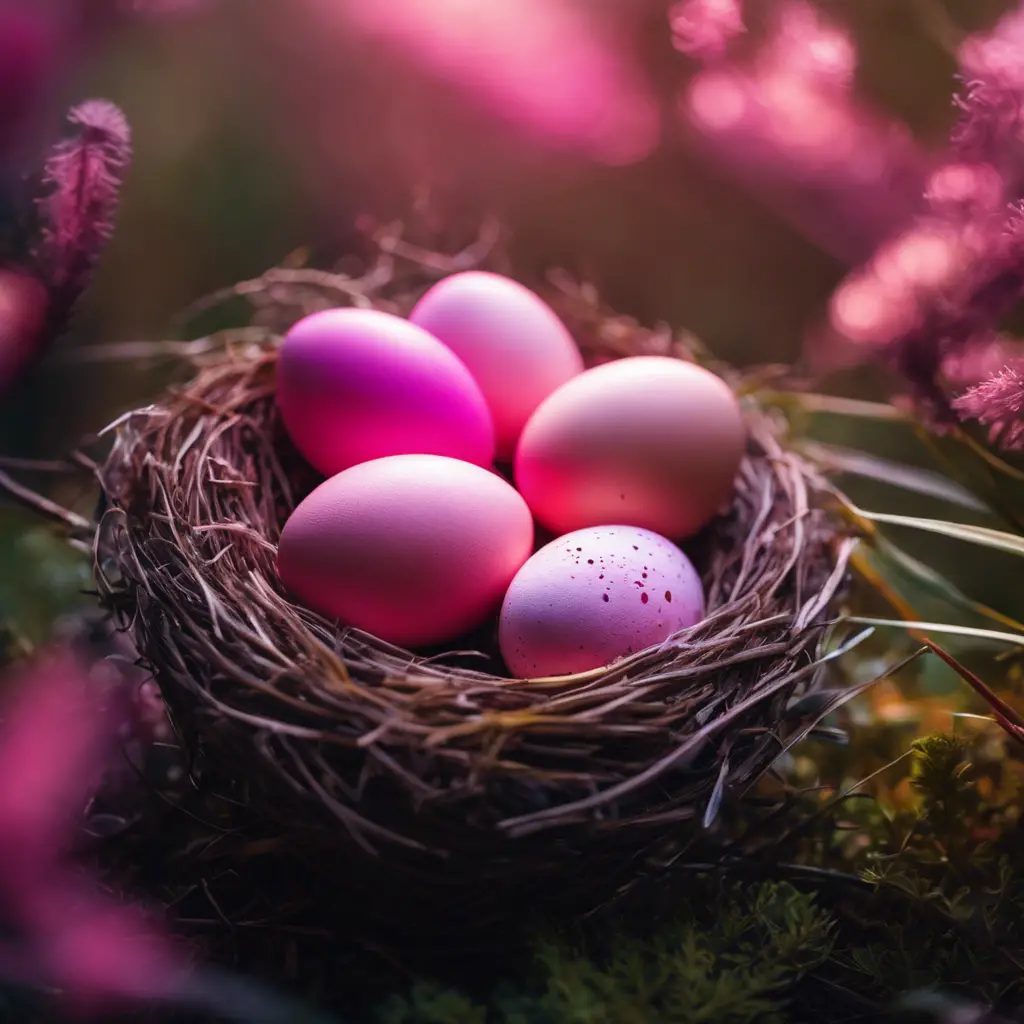
Peering into the intricacies of avian reproduction, you’ll find that the color of a bird’s eggshell is a genetic trait accentuated by the pigments birds ingest, which then permeate the shell during its formation.
The mysterious hue of pink eggs is particularly fascinating. Here’s why:
- Genetics Play a Key Role: The genes of a bird directly influence the color of the eggs they lay, with pink eggs being one of the rarer outcomes.
- Diet Affects Pigmentation: The pigment responsible for the pinkish shade in eggshells is likely derived from the bird’s specific diet.
- Environmental Factors: Surrounding environmental conditions can subtly alter the pigmentation, occasionally leading to the laying of pink eggs in species like bluebirds.
Understanding the interplay of these factors offers a glimpse into the delicate balance of nature’s artistry in eggshell coloring.
Nesting Habits and Predation
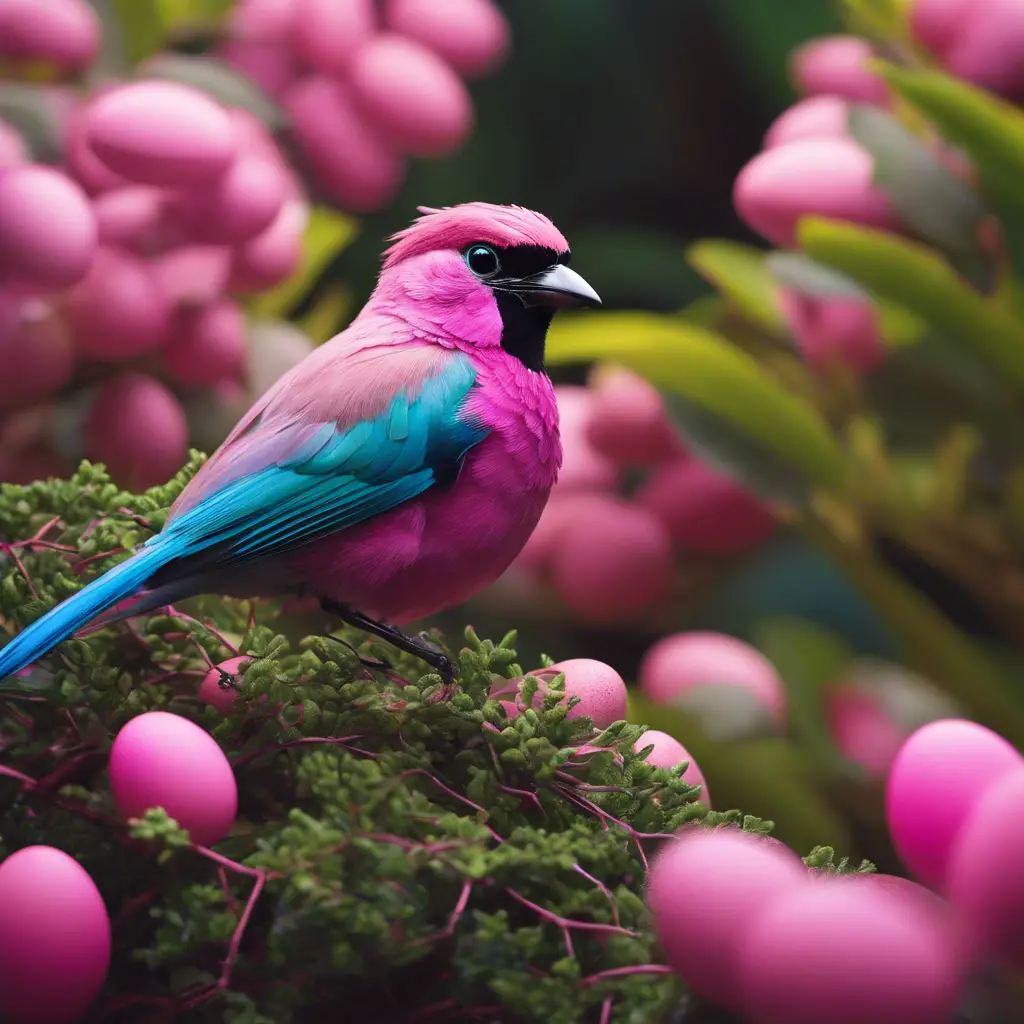
Many birds that lay pink eggs ingeniously select unconventional nesting sites to better shield their vulnerable offspring from predators. The location of the nest can greatly influence the color and survival of the eggs.
Birds that nest on trees or in sheltered environments during the nesting period can lay around a clutch of pink eggs without high risk of predation. The incubation period is a crucial time when both parents, in species like the European Starling, may share duties to defend their brood.
Ground-nesting birds, however, often produce pink eggs with speckles to blend into their surroundings, an adaptation to camouflage against predators. Indeed, predation pressure has a significant role in shaping egg colors and nesting behaviors, emphasizing the importance of habitat preservation for these species.
Conservation and Public Action
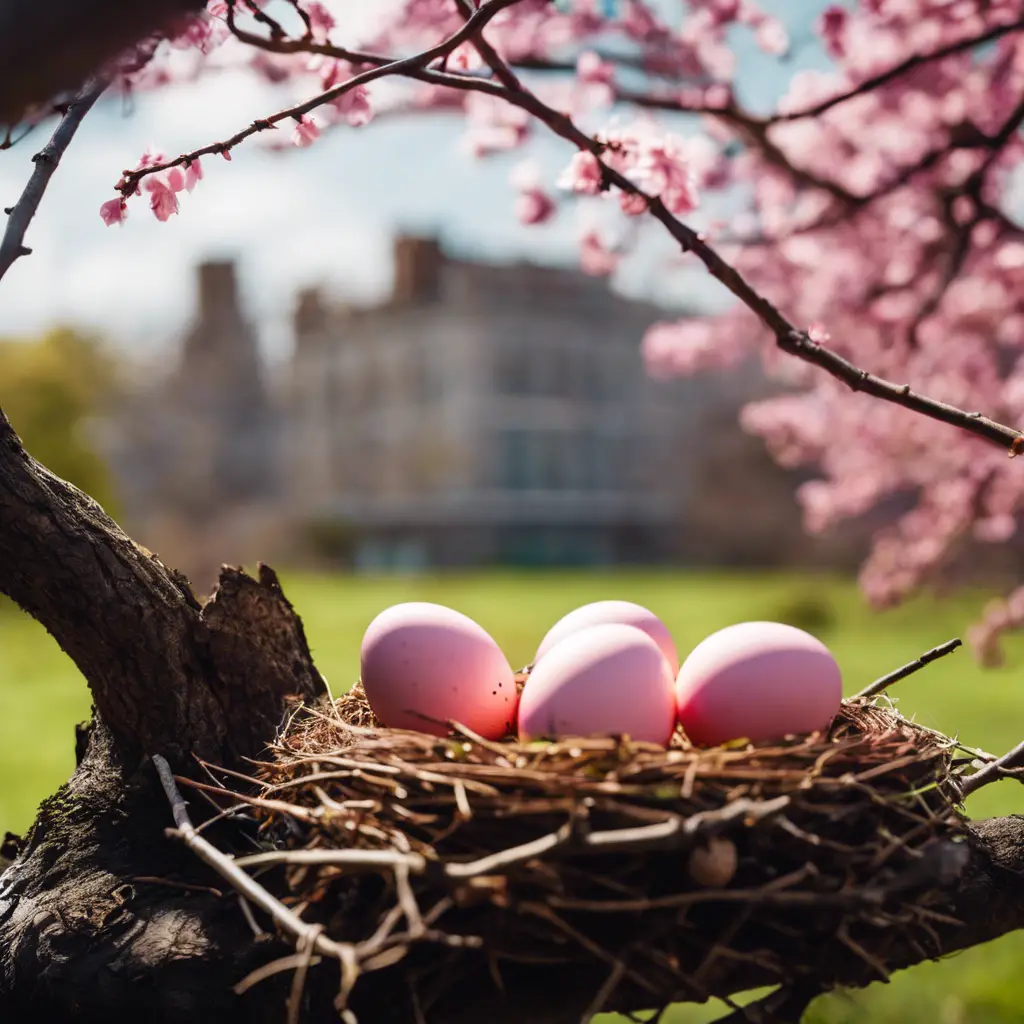
Safeguarding the habitats where birds lay pink eggs is vital, and it requires concerted public action and policy-driven conservation efforts to ensure these unique species thrive. The light pink bird eggs, often a sign of the health of the hen, reflect the delicate balance of environmental conditions necessary for reproduction. For species of songbirds that lay these interesting eggs, the frequency can vary, with some laying multiple clutches of eggs per year.
To evoke emotion and inspire action, consider these points:
- Each egg, a blend of pure white and subtle hues, contains calcium carbonate, mirroring the fragility of their existence.
- Wild birds, with their vibrant songs, rely on our commitment to preserving their nesting grounds.
- The loss of even a single species diminishes the rich tapestry of our global ecosystem.
Frequently Asked Questions
What Animal Has Small Pink Eggs?
You’re likely encountering the eggs of small reptiles or amphibians, as some species lay tiny pink eggs. However, several birds, like the American Robin, also produce pink eggs. Always consider the environment.
What Breed of Chicken Lays a Pink Egg?
You’ll find breeds like Salmon Faverolles and Buff Orpingtons lay pink eggs, a trait influenced by genetics and environmental factors, though they’re rarer than the typical white or brown eggs.
What Is a Pink Egg?
A pink egg is a bird’s egg with a shell pigmented in hues of pink, often due to dietary factors and genetic influences affecting the deposition of pigments during eggshell formation.
What Insect Lays Pink Eggs?
You’re inquiring about insects, not birds. The pink hibiscus mealybug and pink spotted lady beetle are among those that lay pink eggs, often under leaves or near their food sources.
Conclusion
You’ve discovered that birds like the American Robin and House Finch grace us with pink eggs, a marvel shaped by diet and genetics.
Ground-nesters camouflage their brood, while tree-dwellers opt for hues of green or blue.
Remember, safeguarding their habitats is vital.
Your actions can ensure these species continue to thrive, maintaining the delicate balance of nature and preserving the beauty of these colorful eggs for future generations to witness and cherish.

An avid ornithologist, zoologist and biologist with an unwavering passion for birds and wild animals.
Dr. Wilson’s journey in ornithology began in childhood and led him to obtain a Ph.D. in Ornithology from the prestigious Avian Research Institute. He has worked closely with renowned experts in the field and conducted extensive research and field studies globally.




